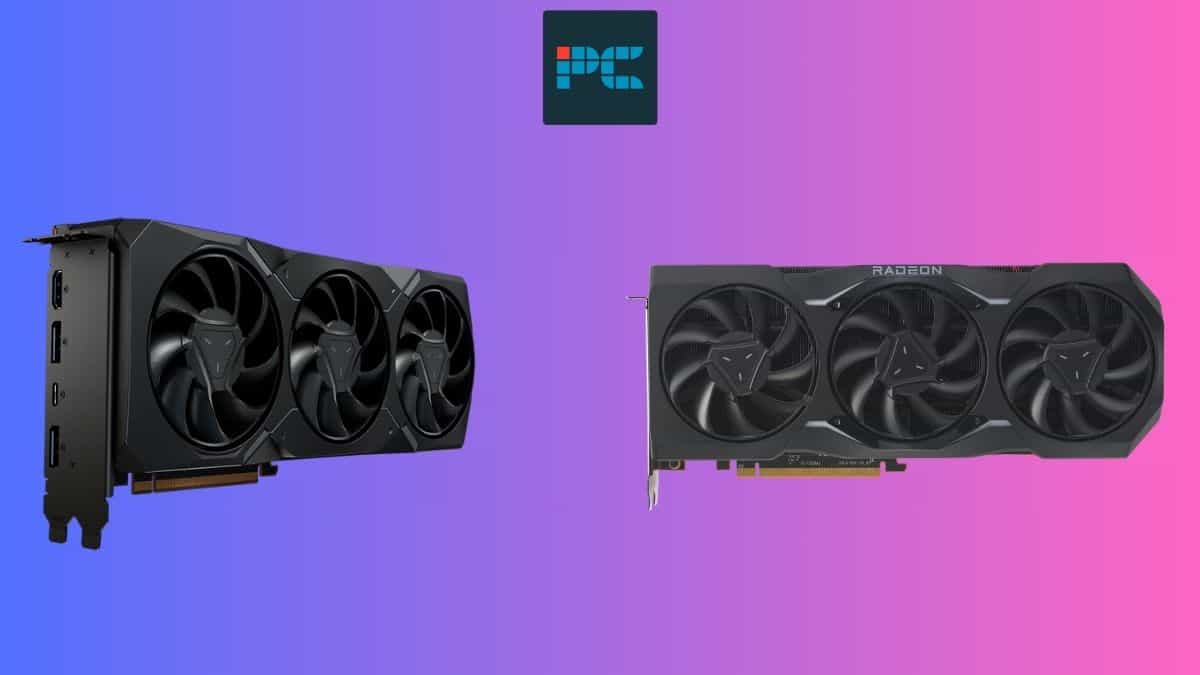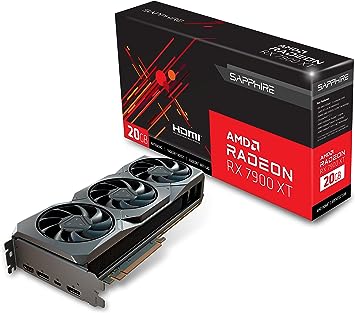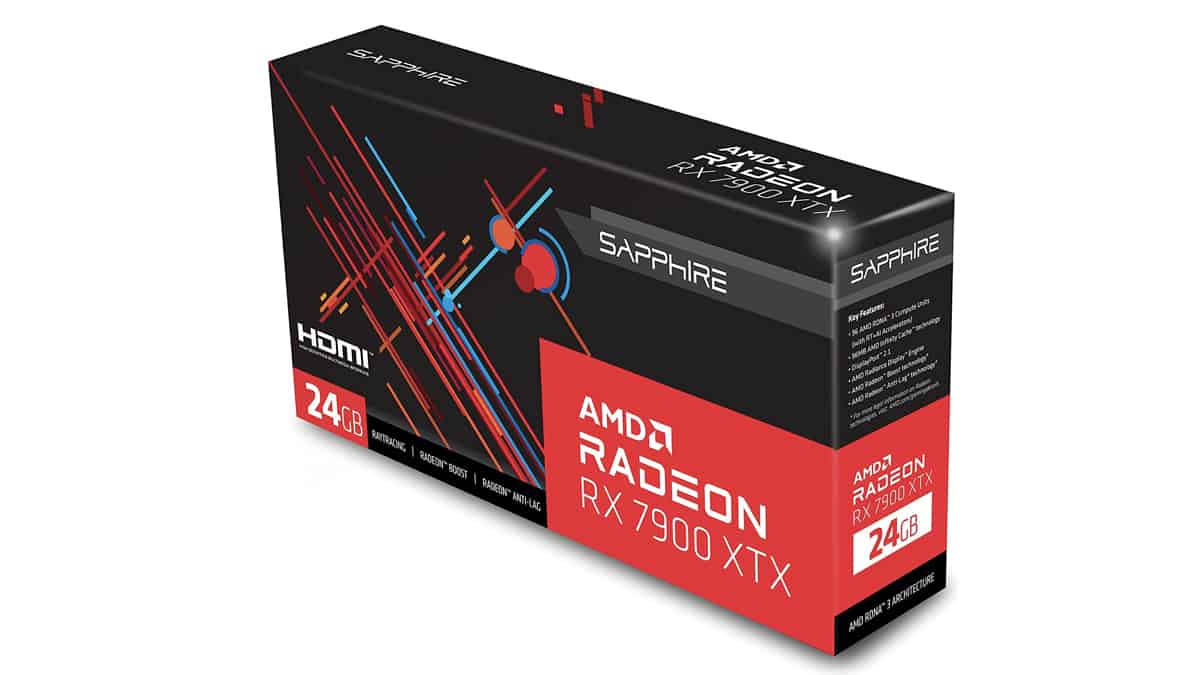RX 7900 XTX vs RX 7900 XT: which AMD RDNA 3 card is for you?

Table of Contents
If you’re looking for a high-end AMD GPU then you’ll need to decide between the RX 7900 XTX vs RX 7900 XT. This feature goes through both GPUs’ specs, performance, design, price, and more to give you all you need to know in 2025.
In this post, we will summarize every piece of information we have about these two graphics cards, and show you a direct comparison between them. We highly recommend you read our full RX 7900 XTX review for the full perspective on the flagship card. And our RX 7900 XT review for added context too.
Prime Day is finally here! Find all the biggest tech and PC deals below.
- Sapphire 11348-03-20G Pulse AMD Radeon™ RX 9070 XT Was $779 Now $739
- AMD Ryzen 7 7800X3D 8-Core, 16-Thread Desktop Processor Was $449 Now $341
- ASUS RTX™ 5060 OC Edition Graphics Card Was $379 Now $339
- LG 77-Inch Class OLED evo AI 4K C5 Series Smart TV Was $3,696 Now $2,796
- Intel® Core™ i7-14700K New Gaming Desktop Was $320.99 Now $274
- Lexar 2TB NM1090 w/HeatSink SSD PCIe Gen5x4 NVMe M.2 Was $281.97 Now $214.98
- Apple Watch Series 10 GPS + Cellular 42mm case Smartwatch Was $499.99 Now $379.99
- ASUS ROG Strix G16 (2025) 16" FHD, RTX 5060 gaming laptop Was $1,499.99 Now $1,274.99
- Apple iPad mini (A17 Pro): Apple Intelligence Was $499.99 Now $379.99
*Prices and savings subject to change. Click through to get the current prices.
We will cover how the specs stand against each other, their pricing, and most importantly how the performance appears to stack up. In other words with this article, you'll know exactly which one you need.
7900 XTX vs 7900 XT Specs Comparison
AMD is making a clear claim and planning to follow it with hard facts. The claim? Performance-per-watt leadership.
AMD's new GPUs are expected to deliver the best performance possible using the lowest amount of watts. The RDNA 3 architecture was based precisely on this objective.
In the table below, you'll see how the flagship GPU, the RX 7900 XTX is only expected to have a TDP of 355W. This is incredibly low if we consider the RTX 4090 has a TDP of 450W for a pretty similar performance.
AMD has managed to create cards that won't draw too much energy, saving you money, and headaches in having to avoid upgrading to super-powerful PSUs.
| 7900 XTX | 7900 XT | |
| Architecture | RDNA 3 | RDNA 3 |
| Compute units | 96 | 84 |
| Shading units | 6144 | 5376 |
| Ray accelerator | 96 | 84 |
| Process Technology | TSMC 5nm (GCD)TSMC 6nm (MCD) | TSMC 5nm (GCD)TSMC 6nm (MCD) |
| Game Clock Speed | 2300MHz | 2000MHz |
| Boos Clock Speed | 2500MHz | 2400MHz |
| Memory | 24GB GDDR6 | 20GB GDDR6 |
| Memory bandwidth | 960 GBps | 800GBps |
| Graphics Card Power (TDP) | 355W | 335W |
Furthermore, the RX 7900 XTX is built to endure high-end tasks better than the 7900 XT. Notably, we can see that the latter has a total of 84 compute units, which compared to the XTX's 96 seems low.
We see a similar result with the overall clock speed these GPUs have. The XTX has a game clock speed of 2300MHz; 300MHz more than its little sister.
In practice, this converts into a very noticeable change in performance when the GPUs are being used for high-end gaming.
Another aspect worth mentioning is the shading units. However, before getting into that we must understand that, in actuality, both GPUs are running the same architecture, the Navi 31. So why are they different?
The RX 7900 XTX is the unlocked version of the Navi 31 GPU. AMD allows the unit to go fully wild in this version while diluting the specs for the 7900 XT. For that reason, we see both GPUs being launched at the same time, but the XTX has around a 14% improvement spec-wise.
So we end up seeing an XTX with 6144 shading units and an XT with only 5376. In reality, when we say “only” but that is still almost 200 more units than the predecessor the 6950 XT.
7900 XTX vs 7900 XT Price
Regarding price, AMD shows its claws and teaches the market that it's possible to build well-constructed PC components with public-centric pricing.
According to the news conference in November, the RX 7900 XT will have a starting price of $899 while the top-tier RX 7900 XTX will cost $999.
Fortunately, both prices are way below the $1,500 of the RTX 4090 and are even lower than the ‘more affordable’ RTX 4080 pricing at $1,199.
7900 XTX vs 7900 XT Performance
Even though there are no third-party performance benchmarks, we can base our analysis on AMD’s information that seems to be straightforward and pretty reliable.
According to AMD's information, the RDNA 3 architecture has made a pair of fast and strong GPUs. Team Red conducted a test in 4 games: Resident Evil Village, Call of Duty: Modern Warfare 2, Cyberpunk 2077, and Watchdogs: Legion.
| 4K Max settings | RX 7900 XTX | RX 7900 XT | RX 6950 XT |
| Resident Evil Village | 190 | 157 | 124 |
| Call of Duty: Modern Warfare 2 | 139 | 117 | 92 |
| Cyberpunk 2077 | 72 | 60 | 43 |
| Watchdogs: Legion | 100 | 85 | 68 |
As expected, both GPUs overperform by up to 67% on the last generation’s flagship (RX 6950 XT) in rasterization. These are pretty revealing numbers that show pretty much everything that we need to know.
Is AMD's new-gen good for 4K gaming? Well, they are! Both GPUs seem to show an incredible balance between prices, performance, and energy needs.
AMD states that the flagship GPU will get to top frame rates when playing in 1440p too; this is an expected and realistic claim that aligns with the specs and benchmarks we’ve seen so far.
According to AMD’s claims, games like Apex Legends should hit the 300 FPS barrier while Valorant should get to the 833 FPS cap.
Team Red also claims that the XTX is built to “game at 4K and beyond” – also suggesting 8K at well above 60 FPS with the assistance of FSR. Unlike similar statements from NVidia, the DisplayPort 2.1 standard that the 7900 XTX adheres to backs up these claims somewhat.
And we…might be able to run 8K games. Although it’s worth pointing out that in its presentation AMD suggested the ‘8K Widescreen’ resolution was 7680 x 2160 (16 million pixels). This is double the specifications of 4K.
However, that isn’t true 8K, in the sense you’d expect from a TV. True 8K is 4x the specifications of 4K, and the dimensions are 7680 x 4320 pixels (33.2 million pixels).
RX 7900 XTX vs RX 7900 XT Conclusion
Of the two, if you're looking for the best results with ray tracing in a high-requirement gaming environment, in our view you should go with the RX 7900 XTX.
In the majority of tests, this GPU showed the best performance when this feature was on, alongside FSR than any other AMD card.
On the other hand, if you're more interested in power efficiency and performance-to-price ratio, the RX 7900 XT is an amazing option. The GPU doesn't show too much of a drawback from the XTX while being $100 cheaper.
But there is a question that still hangs: will any of these GPUs be a competitor for the RTX 4090 monster? The short answer would be no, in all honesty.
But AMD is not even trying to compete with that GPU. It is walking a different path away from the silverback gorilla GPUs.AMD's Scott Herkelman has even said that “’we’re competing in $1,000 or below (market)” leaving the result achieved by the expensive 4090 irrelevant.
So, as we said in the beginning, AMD has claimed with these GPUs. And for now, 8K aside, we believe them. At least until we have verified third-party benchmarks.



